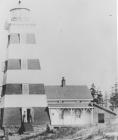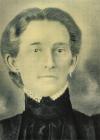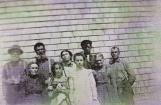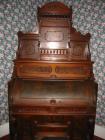1
The West Point Lighthouse dominates not only the seascape and landscape of West Point - the tiny fishing and farming community at the southwestern tip of Prince Edward Island, it also dominates the hearts of generations of people who have lived within the sphere of its beam.Even people who only come for a short visit, find themselves drawn back again and again.
Our Light calls to them and they find themselves back on our doorstep, beneath the ever-present beam.
The Lighthouse represents many different things to those who watch its beacon flash reassuringly through the night, or admire its bold black and white day marks.
This is the story of the early days of the West Point Lighthouse.
3
The LightkeeperA poem by Carol Livingstone, about the West Point Lighthouse
The
most important
job the lightkeeper
had was to see that
the light was kept
burning every night.
It was also extremely important that
the timing mechanism was exact to the
very second. Each lighthouse has its
own distinct flash pattern which is
noted in a
Mariner's Guide.
The flash pattern of
this Lighthouse is six
seconds flash, six seconds
eclipse. It was also essential
that the lenses be kept very clean
which was not an easy task when oil
lamps were used. The metal canopy over
the light protected it from any rain or snow which might blow in through the vent on the top of the Lantern Room. In the days of smokey oil lamps it would also serve to keep the soot from spreading right to the roof which would be very hard indeed to get all cleaned up.
5
The West Point Lighthouse was the first built by the federal government on Prince Edward Island. In that capacity it is associated with the transfer of responsibility for aids to navigation from the colonial government to the new federal Department of Marine. A design change from octagonal to square towers coincided with the new administrative regime.6
William Anderson MacDonald Keeper of the West Point Light for 50 years1900
West Point, Prince Edward Island
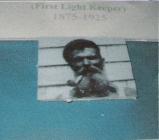
7
William Anderson MacDonald was the first Keeper of the West Point Lighthouse. He accepted this position of trust in 1875 and held it for fifty years until he retired in 1925.The ancestors of Lighthouse Willy, as he was affectionately known, moved from Scotland to Glenwood, Prince Edward Island,Canada in the early 1800s.
As a young adult, he moved five miles to West Point to take part in the shipbilding industry which was taking place down the lane from his farm. He was hardworking, strong and honest; early records refer to him as a "stalwart Scot". He was recommended for the position of Lightkeeper by Senator Yeo, one of the chief shipbuilders on P.E.I.
The West Point Light was first lit on December 21, 1875. It went into full-time service on May 21, 1876.
It is said that Lighthouse Willy never missed a night's duty in fifty years.
9
Lightkeepers were expected to extend hospitality and lodging to those in need. A large part of the responsibility of ensuring these needs were met, fell on the shoulders of the Lightkeeper's wife. Mariah, William's wife, was no different.In the early 1900s this responsibility had dire consequences. A foreign sailor who was very ill sought shelter at the Lighthouse. Two of William's married daughters were staying with him and Mariah at the Lighthouse while their husbands were at sea. Bertha (Smith) and Helen (Dumville) nursed the sailor through high fever and what they called Black Measles. When he recovered he got passage on another ship and was never heard of again.
The folks at the Lighthouse were not so lucky. The Keeper's daughters caught the measles and Helen's first baby was born prematurely and lived only a few days.
Schooners from Carraquet, Gaspe, Canada and other ports often took shelter from severe winds in the Gulf of St. Lawrence by sailing into the Northumberland Strait. When they ran out of supplies, they would come to the West Point Lighthouse and use one of the few English words they knew -"bread". The Light Keeper and his family always gave them sufficient food to reach home port.
10
Let The Lower Lights Be BurningBrightly beams our Father's mercy
From His Lighthouse evermore,
But to us He gives the keeping
Of the Lighthouse along the shore.
Chorus:
Let the lower lights be burning!
Send a gleam across the wave!
Some poor fainting, struggling seaman
You may rescue, you may save.
Dark the night of sin has settled,
Loud the angry billows roar;
Eager eyes are watching, longing,
For the lights along the shore.
Trim your feeble lamp, my brother;
Some poor sailor tempest tossed.
Trying now to make the harbour,
In the darkness may be lost.
14
Family and friends would gather around the 1876 organ each evening while Mariah or one of her daughters played "Let the Lower Lights be Burning", in memory of lives lost at sea because of a negligent Keeper.The Lighthouse was never a lonely place to be. Along with William's large family, many friends and neighbours visited frequently.
The Lighthouse was a family home full of hospitality, music and food. A favourite occupation was storytelling such exciting tales as the Phantom Ship and the Sea Serpent. Many of these stories are still told today in the Lighthouse parlour.
Treasure-seekers would stay at the Lighthouse until it got dark; then the boys, Stan and/or Jack, would take them to the money pit. (Rumour has it that a Pirate's Treasure is indeed buried in West Point.)
The boys would dig all night and mother would give them a fine big breakfast in the morning.
